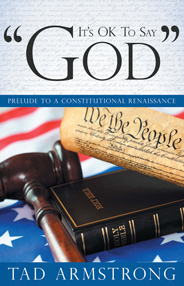2 Jun 2011
California prisons
The only thing cruel and unusual about the Supreme Court’s decision is its ruling.
© St. Louis Post-Dispatch
Tad Armstrong
Last week’s Supreme Court decision in Plata v. Brown affirmed a lower court injunction that will practically require the release of approximately 26% of California’s current prison population (40,000) by May 23, 2013. I say “practically” because, although the decision requires a reduction from the state’s current volume of nearly 200% of facility design capacity to a maximum of 137.5% (and, therefore, could be achieved by an increase in prison construction with no reduction in the guest list), it is no surprise that California, like many states, is broke. New prisons are not on the horizon.
When government cannot accomplish its basic function of ensuring public safety due to the cost of its patronizing interest in excessive control of its citizens through the adoption of non-essential programs (otherwise known as the nanny state), anarchy is the inevitable victor. Innocents will die, homes will be robbed and women will be raped in the aftermath of this prisoner release due, in part, to California’s past entitlement handouts. Folks, government at all levels is flat out of money. Why is that so difficult to understand?
But, big government issues aside, the Plata majority decision, authored by Justice Kennedy, is a gross misinterpretation of the congressional Prison Litigation Reform Act of 1995 (PLRA).
The eighth amendment to the United States constitution prohibits the infliction of cruel and unusual punishment. When society removes the ability of a person to provide his own food, clothing, shelter and health care by incarcerating him, clearly there are certain minimal obligations the constitution imposes upon those charged with administering his punishment. No justice would disagree that some of the examples of past horrors in the California system, as outlined in this decision, represent clear eighth amendment violations. But, this decision does not address the release of any of those victims.
This case was brought by two classes of California prisoners — those with serious mental disorders and those with serious medical conditions. The PLRA states that judicial relief with respect to prison conditions shall extend “no further than necessary to correct the violation of a Federal right of a particular plaintiff or plaintiffs”; that the relief must be “narrowly drawn and extend no further than necessary to correct the violation”; and that it must be “the least intrusive means necessary to correct the violation.”
Justice Scalia, in dissent, has a novel idea. How about interpreting the terms of the PLRA, above, in accordance with what they say? He states: “In my view, a court may not order a prisoner’s release unless it determines that the prisoner is suffering from a violation of his constitutional rights, and that his release, and no other relief, will remedy that violation. Thus, if the court determines that a particular prisoner is being denied constitutionally required medical treatment, and the release of that prisoner (and no other remedy) would enable him to obtain medical treatment, then the court can order his release; but a court may not order the release of prisoners who have suffered no violations of their constitutional rights, merely to make it less likely that that will happen to them in the future.”
It is conceivable that none of the 40,000 to be released will ever have been subjected to any cruel or unusual punishment (even as defined by the liberal majority) and the vast majority of them will never have suffered a serious mental disorder or medical condition while incarcerated. Yet, the majority justifies the release of prisoners whose rights will never have been violated on the premise that a reduction in overcrowding will decrease the odds of eighth amendment violations occurring in the future. On that theory, closing all prisons would better achieve their goal.
The majority supports its warm-and-fuzzy-feel-good outcome, in part, by the testimony of a correctional officer who said that, in one prison, “up to” 50 sick inmates “may” be held together in a 12- by 20-foot cage for “up to” five hours awaiting treatment. This testimony is meaningless and ambiguous at best, but the majority apparently believes it important enough to mention in support of this massive release of prisoners. The officer appears to be describing a typical emergency room in a major urban community hospital on a Friday night. Such is hardly the fodder of cruel and unusual punishment.
My conservative heart bleeds for the prosecutors, witnesses, taxpayers and victims of at least 40,000 proven crimes in California, not to mention their countless extended families. These “classes” rarely get any mention in a case like this because there is no constitutional right to justice for the victims of crime. Perhaps there should be.

Comments











In the United States, inmates in both state and ferdeal prisons are guaranteed certain constitutional and civil rights. They include freedom from cruel and unusual punishment, the right to due process, freedom of speech, freedom of religion, the right to adequate medical care, freedom from racial discrimination, and the right of access to the courts. Only in unusual circumstances and for the sake of safety and security may limitations be imposed on these rights. A prisoner has the right to adequate medical care . That would apply to any illness, including cancer.A prisoner also have the right to refuse medical care.